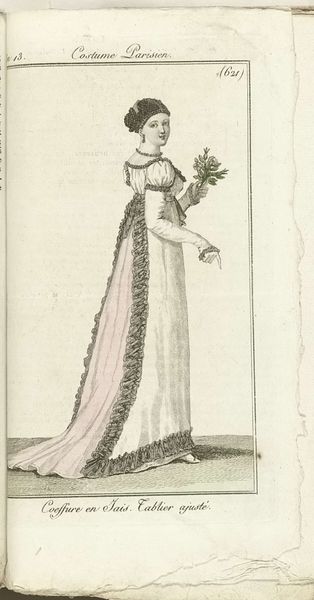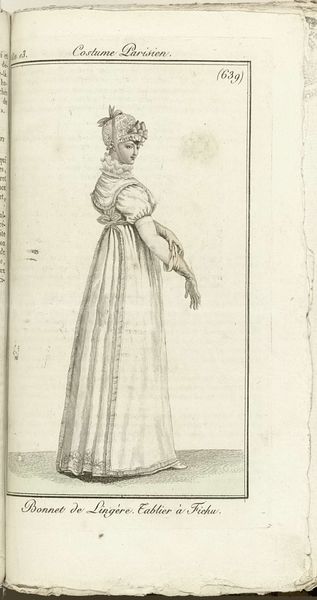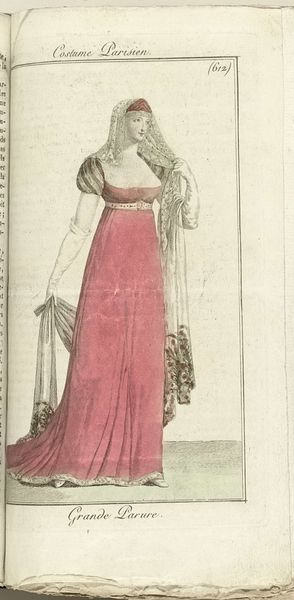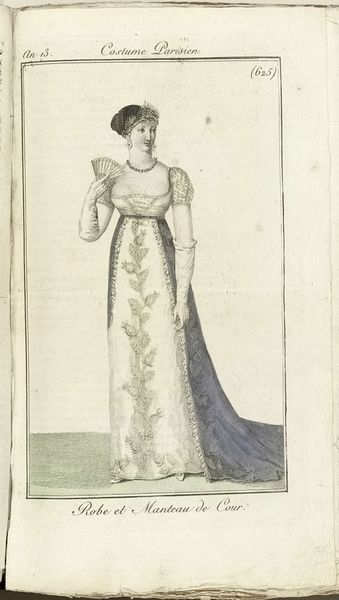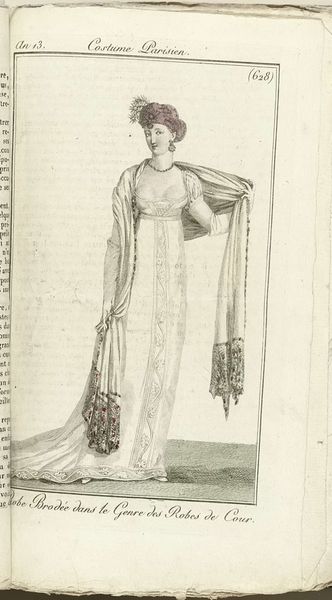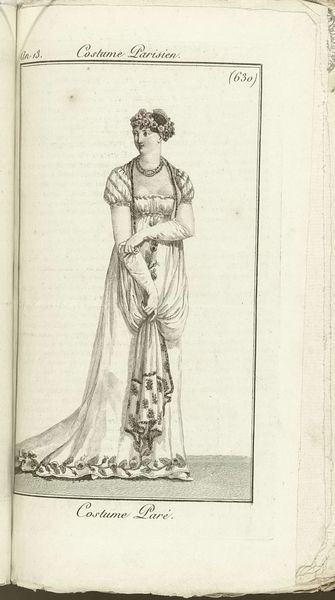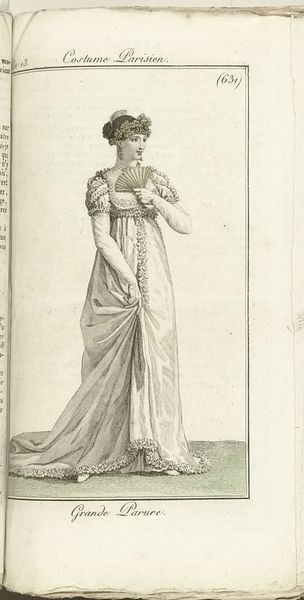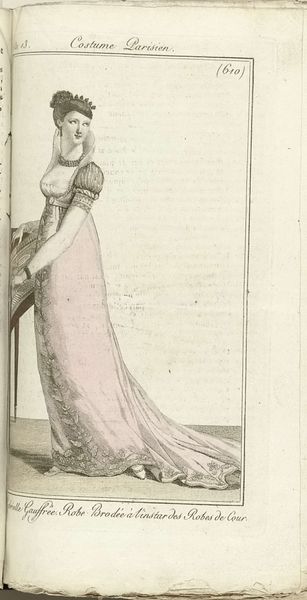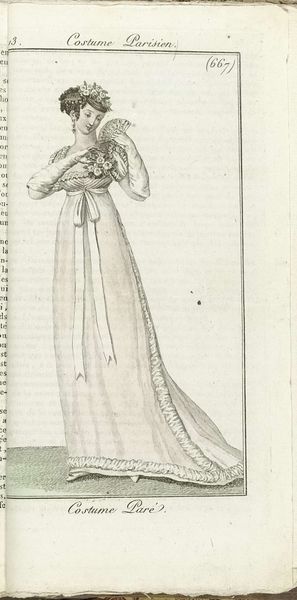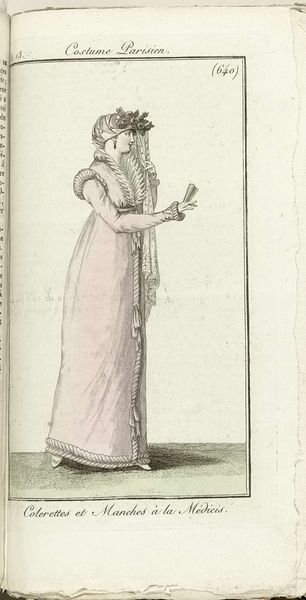
Journal des Dames et des Modes, Costume Parisien, 1805, An 13 (606) Toque de Velours. Robe de Grande Parure 1805
0:00
0:00
drawing, print, paper, ink
#
portrait
#
drawing
#
neoclacissism
# print
#
paper
#
ink
#
genre-painting
#
dress
Dimensions: height 181 mm, width 112 mm
Copyright: Rijks Museum: Open Domain
Editor: This is "Journal des Dames et des Modes, Costume Parisien, 1805, An 13 (606) Toque de Velours. Robe de Grande Parure," a print made in 1805 by Horace Vernet. The drawing is quite delicate, depicting a woman in formal attire. I notice her dress is very ornamented. How do you interpret this work, Professor? Curator: Well, beyond the immediate impression of Neoclassical fashion, it's crucial to view this print through the lens of its socio-political context. Consider the "Journal des Dames et des Modes" itself: it wasn’t simply a record of trends. Instead, it actively shaped and reinforced the image of elite femininity in post-Revolutionary France. What does the specific design of the "robe de grande parure" suggest to you about the aspirations of this newly formed, post-revolution French society? Editor: I suppose it’s a demonstration of status and luxury, almost flaunted considering what came before. The high waistline and flowing skirt...maybe a return to perceived classical ideals after the Revolution? Curator: Precisely. And this embrace of "classical" aesthetics was inherently political. It subtly distanced the new regime from the excesses of the aristocracy, while simultaneously establishing a new visual language of power. It signaled order and restraint after a period of intense social and political upheaval. Note, however, the overt luxury items that could also underscore new class divisions. What about the woman's pose and gaze? Does she seem powerful? Submissive? Editor: Hmm, not particularly powerful, but very self-assured. Is that partly a performance, though, for the intended audience of the Journal? Curator: Exactly. It's a carefully constructed image intended to project a particular kind of feminine ideal, intertwined with contemporary politics. It makes me wonder who *wasn't* being represented and what messages are silently being broadcast through imagery such as this. Editor: That gives me a lot to consider when I look at fashion plates like this now. I had been missing that crucial historical context. Curator: Yes, by exploring these connections we move beyond surface-level readings to uncover the complex power dynamics at play in even seemingly simple images.
Comments
No comments
Be the first to comment and join the conversation on the ultimate creative platform.
